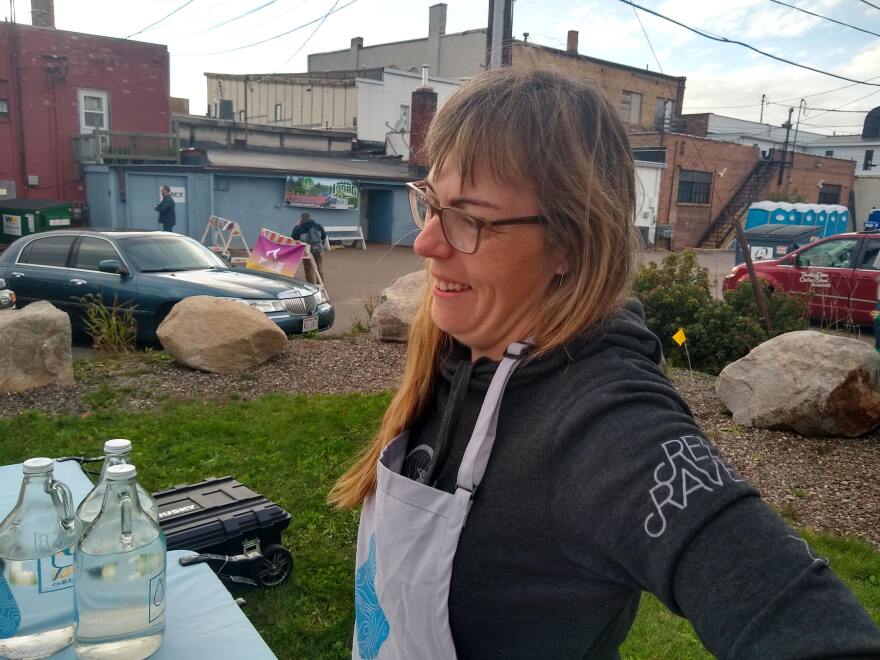Shanai Matteson poured three small cups of water for Mary Moxon last Friday, putting them on a wooden board, like a flight of beers at a craft brewery.
“It’s very subtle, but water has different tastes, and it has to do with the mineral content of the water, the treatment of the water,” Matteson said. “Sometimes it has to do with the pipes or the container that the water comes in.”
Matteson had just set up her table, called a popup Water Bar, at Project North, a music and sustainability festival in Rhinelander.
Moxon tried the three water samples. She told Matteson one tasted muddy, one flat, and one pretty good.
“By asking people to really taste the water, what we’re really doing is slowing them down and helping them think about it,” Matteson said. “They’re thinking about something they do every day in a new way.”

Then, Matteson revealed which water was which.
The water Moxon thought tasted muddy was Rhinelander city water, the flat water was bottled water, and the one Moxon liked best was tap water from Minneapolis, Matteson’s home.
Though Matteson lives in the Twin Cities now, she grew up near the headwaters of the Mississippi River in northern Minnesota. That upbringing helped make water part of her identity. Now, she’s getting people to think about how water is part of their own identity and culture through her creation, the Water Bar.
“Water flows through all of our lives, so we all have stories about water. Those stories are very much about who we are and where we live and all of those connections,” Matteson said. “So that’s the cultural piece.”
In Minneapolis, Matteson’s home base is the Water Bar and Public Studio, but she takes her popup Water Bar all over.
At each stop, she collects some local water to include in the taste test. After she gave me the flight of three water samples, I picked Rhinelander city water as my favorite.
That made sense, according to Matteson, since I live in the city and drink municipal water every day.

“What we found is people like what they’re most used to. You tend to prefer the water that you drink most often,” she said.
Matteson’s children, including her seven-year-old son Amasa, often accompany her on road trips. He said he likes Mississippi River water best.
“It’s my mom’s favorite water, and I like it, it’s tasty,” he said.
The same Mississippi River that starts near Matteson’s childhood home is the primary contributor of water to the Twin Cities municipal system.
Matteson uses water as a conversation starter, a teaching tool, and an inspiration for art.
“Water as a product or as a resource, that’s a very cultural idea. That’s an idea that comes from a very specific culture,” she said. “There are lots of cultures that don’t think of water as a resource, but think of water as a relative or kin.”
For Matteson, the little plastic cups with water samples represent something more than a thirst quencher.

They make people slow down, taste what they’re drinking, and think about water as something with a story, something connected to identity, something that defines culture.
“All water comes from somewhere. A lot of us turn on our taps and we don’t really think about that, but no matter where you are, your water has a source. It’s either a river, a lake, or groundwater,” Matteson said. “All water comes from somewhere. That water connects us to place."
_







